LIBERAZIONE !
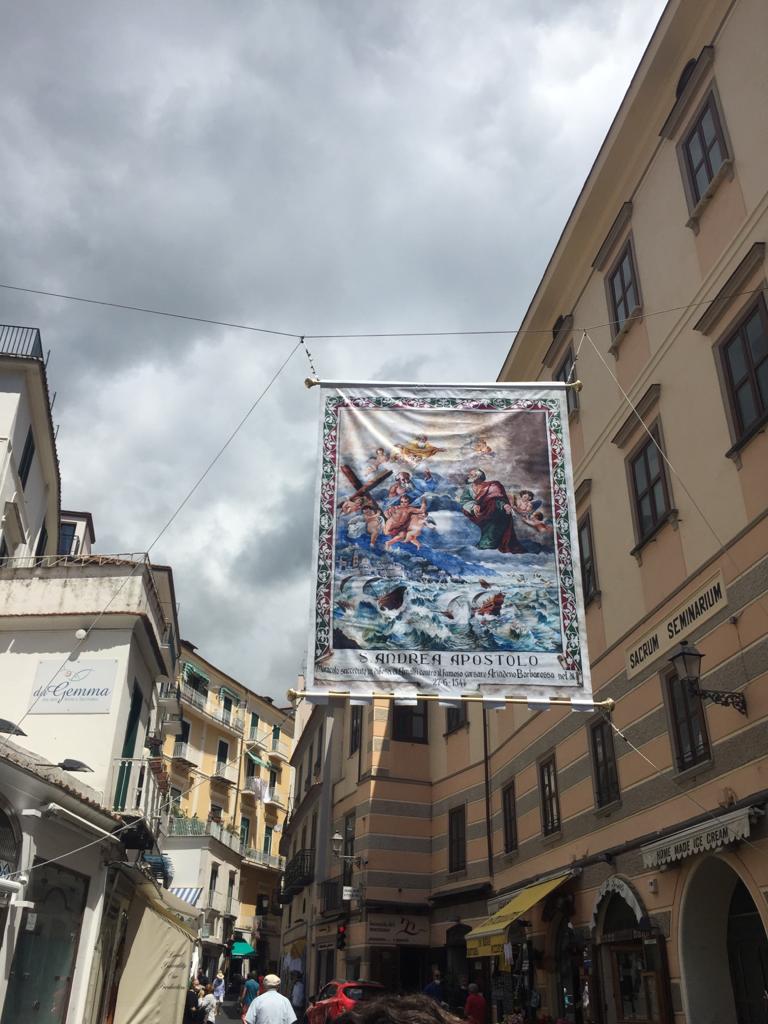
In Amalfi, Saint Andrew will — as longstanding tradition requires — soon be celebrated on his feast day, June 27th. Although social distancing will curb some of the festivities, all of which are highly social in nature, there is still much preparation in the air.
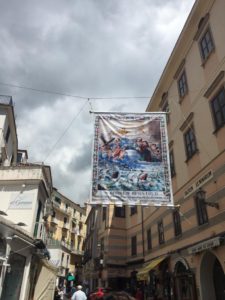
Saint Andrew’s relics arrived in Amalfi in 1208, and since that time the saint has been town protector, enjoying a cherished spot in the heart of the Amalfitani.
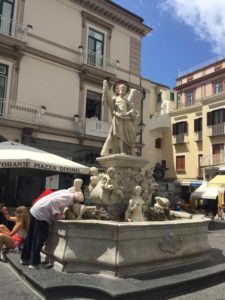
The upcoming Festa di Sant’Andrea recalls a miracle that occurred on June 27th, 1544, when the city was assaulted by fierce Barbarossa pirates. Clearly the saint intervened, said the Amalfitani, because just in the nick of time sprang up a violent sea storm (unheard of in late June).
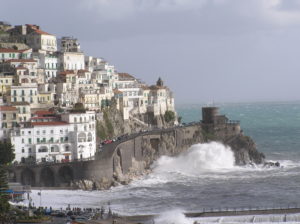
Amalfi survived ! The date went into the city calendar as one devoted to recognizing the life-saving assistance of their attentive saint.
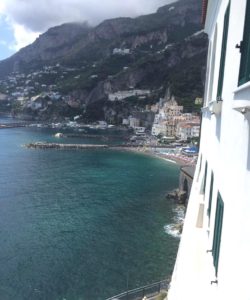
This year has particular significance. After two months, one week and two days of total lockdown, Amalfi is (with all of Italy) liberated. Hotels and restaurants are now just opening, one by one, and this is a cause for both relief and celebration.
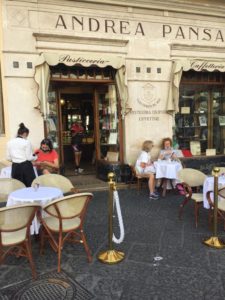
It is a delightful time of year to be in Amalfi, with very few tourists (mostly Italian) enjoying a location that they have always loved. I wish that you were here too.
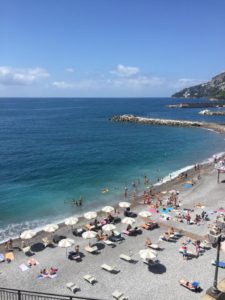
The Campania region (which includes Amalfi, Capri and Naples) has much to be proud of: it suffered only 4843 confirmed cases, and 431 deaths, this in a country with 238,000 confirmed national cases and 34,450 national deaths. The Amalfi coast itself had a few dozen cases (dealt with by quarantine) and no deaths.
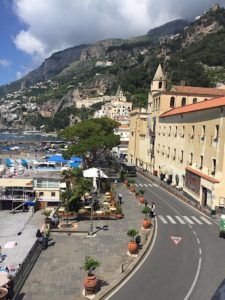
Said a friend, explaining the rationale: “we have too much sun, and we eat whole lemons.” And then : “actually it is probably because we eat too well in general.”
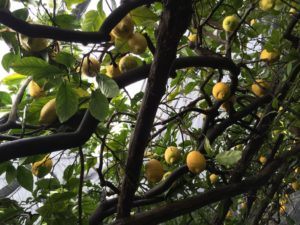
So a double liberation: a rich civic celebration of their patron’s remarkable feat and the liberation of hotels and restaurants that could not (or cannot) wait to throw open their doors!

Viva la liberazione !
When I write about specific hotels, as I have recently about Al Sole in Asolo, it feels a bit like singling out one of your friends as the favorite. They are all favorites! But Amalfi’s Luna Convento is one of the hotels that our travelers have enjoyed most, and described in 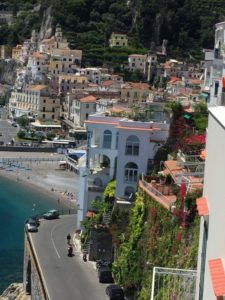
warmest terms. Historically it is also one of the more interesting of the hotels that we love : in operation since 1818, managed for five generations by the Barbaro family and built around a monastery founded in the thirteenth century by St Francis of Assisi.
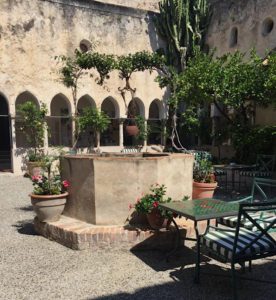
Its personality and charm, as well as tantalizing position on the east side of town, have historically made it enticing to visitors of all nationalities. I always urge our Luna Convento travelers to peruse the lively selection of autographs, appraisals, poems and images in the hotel’s “Golden Books”, ledgers from the last 200 years that the family keeps as a lively record of past guests.
I am delighted to announce that the Luna Convento will be welcoming guests again as of June 26, just in time for celebrations of Saint Andrew.
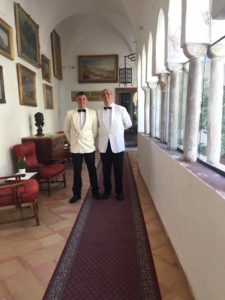
And their warm, professional staff is so eager to get back to work !

There is a third local liberation however that delights me too, and that has taken place in a garden.
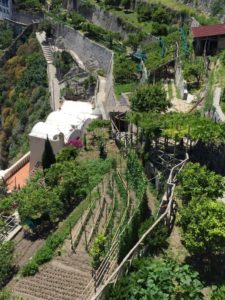
A garden that had fallen largely into ruin has been freed from neglect, nourished to health and now bursts with vitality.
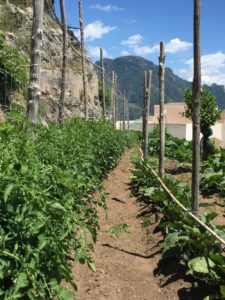
The original Franciscan monastery that was sited where the Luna Convento is now once kept a flourishing garden. In the local custom, plantings were arranged in the broad, hand-hewn stone terraces that are horizontal oases in a landscape that is largely vertical.
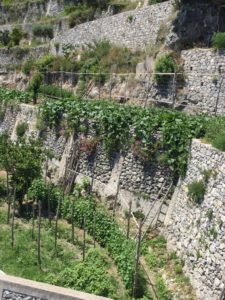
As hills and mountains commence nearly at the sea along this coast, Amalfi’s earliest farmers developed an innate understanding of how best to contain the rich volcanic earth, reap glorious produce and simultaneously prevent hillside erosion.
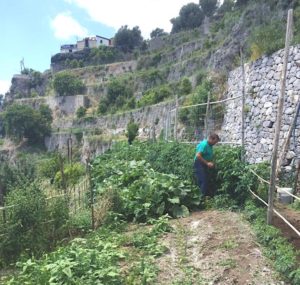
Where is this garden?
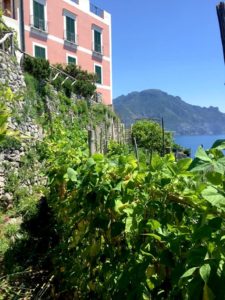
Luna Convento owns a special villa that we book often for our clients. I felt its Franciscan spirit when first I saw it, years ago, when the owner, Andrea Barbaro, was restoring it to the high standard that it merited.
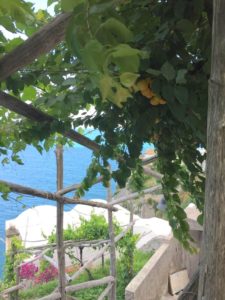
It is a property that feels in balance, a solid house that is perfectly positioned on ancient foundations, and that could not be better placed for its relationship to the mountains above, the sea below, and the surrounding lemon groves and garden. 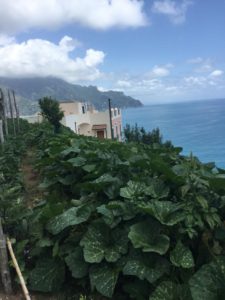
In the last year, Andrea Barbaro has overseen the return of the villa’s garden, which had suffered neglect when the previous gardener retired.
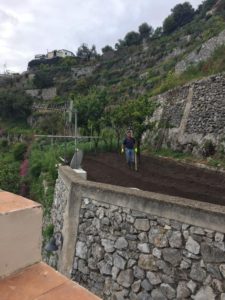
The garden has emerged a utopic Eden, and is nourished only by organic and biodynamic principal. One of the last of the coast’s contadini, Carletto delli Santi, a swarthy, warm man who is as committed to the land as he is to his family, is the gardener and does all the work himself.
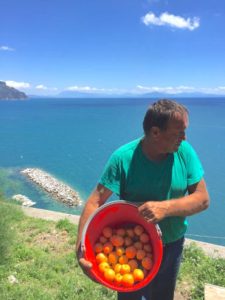
“Delli Santi” is a fitting surname for Carletto, who understood right away that the first thing was to re-establish balance. He believes strongly in the quality of seeds and what the earth itself eats — and follows intensely every phase of cultivation, including picking all of the produce himself.
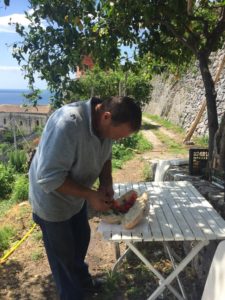
He also personally delivers it to kitchen. It is impossible to imagine any restaurant anywhere where produce can be fresher, or brim with more flavor. Beans, zucchini, peppers and tomatoes are still warm from the sun when the chefs set to work, doing of course as little as they possibly can to what is already so perfect.
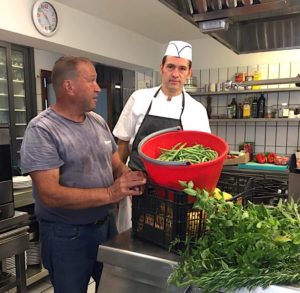
Early into lockdown, with the hotel and restaurant closed, Giovanni Barbaro decided that he would give away all of this produce to those who were in need.

Those less fortunate Amalfitani, thanks to his generosity, enjoyed wondrous fruit and vegetables in these last months. The Franciscans would have been very pleased.
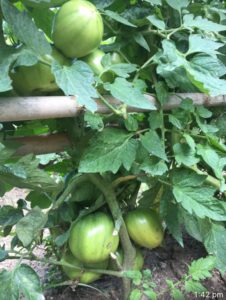
What grows in the garden ? Sfusato Amalfitano lemons, first and foremost, the citrus staple, recognizable for their pointy tips and intense perfume.
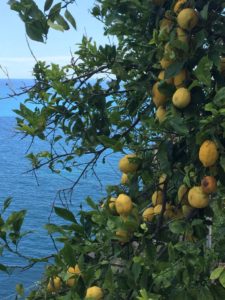
Tangerines, oranges, plums, apricots, mulberries, prickly pears, table grapes, salads, abundant varieties of winter and summer greens, tomatoes to consume raw and cooked, peas, artichokes, asparagus, onions, fava, eggplants, peppers, potatoes, pumpkins and squash, cardoons, black chard, fennel, lavender and myriad herbs.
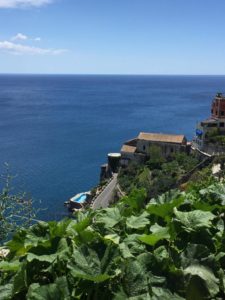
Springwater from the hilltop down of Scala has always fed the garden. Still visible in the garden is the piping of the original water system, commissioned by an affluent Amalfitano in the 13th century as a gift to the Franciscans.
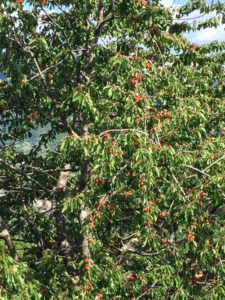
Needles to say, the restaurant of Hotel Luna, when it reopens, will be one of the happiest places to dine on the Amalfi coast. The cooks know to do as little as possible to the garden flavors that Carletto will carry down to them every day. For culinary inspiration, they need only to visit the garden.
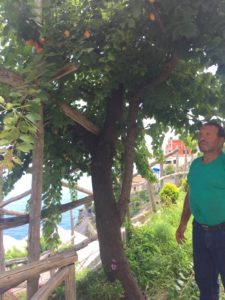
Follow our Facebook page (Marjorie Shaw’s Insider’s Italy) for on-the-scene reports from Amalfi on June 27th. In the meantime, please be well, eat whole lemons (sfusato amalfitano, if you can find them) and continue dreaming of the time soon when you too will be in Amalfi.

Meet Marjorie
Insider’s Italy is an experienced family business that draws on my family’s four generations of life in Italy. I personally plan your travels. It is my great joy to share with you my family’s hundred-year-plus archive of Italian delights, discoveries and special friends.
